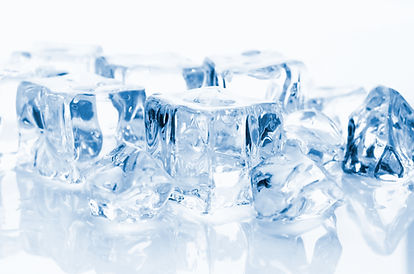It’s almost impossible to live your entire life without straining a muscle, waking up with a crick in your neck or dealing with soreness from overuse. These experiences can bring life to a temporary stop and ice/heat can provide quick, cheap pain relief when you need it the most.
So should you grab an ice pack or a heating pad?
You would think that science would have all the nitty gritty details on how ice and heat work, but sadly, there really isn’t much empirical evidence telling us exactly what makes ice and heat effective. Over time we’ve developed some guidelines and plausible logic for which will work best at making you more comfortable.
So, what do you do?
Ice is for fresh/new injuries, swollen (inflamed), bruised, sore spots. As long as there isn’t an open wound (inflammation is a natural healing mechanism with a laceration), throw an ice pack on it.
Except for back pain, don’t ice general back pain. See below.
Heat is for general aches, pains, and cramps. If the pain is related to your muscle, heat is your best choice. (As long is there no swelling.) Heat works best for general back and neck pain, overexertion, and pains related to fibromyalgia.
Uhhh, how do I know which to pick?

Ice feels best on swelling, which is a biological response to injury or trauma.
Swelling, a variety of chemical and neurological changes occurring within the affected area, are intended to speed the process of healing. For injuries that don’t have open wounds, swelling is an unnecessary experience that causes increased pain for no good reason.
(Note: injuries with tissue cuts NEED inflammation and shouldn’t be iced unless advised by a physician.)
Ice is a temporary analgesic, or pain reliever, but isn’t a full treatment. Ice will help make it hurt less, but there isn’t much evidence showing a reduction of inflammation or increased healing time vs not applying ice. Ice is believed to constrict local capillaries, restrict blood flow, and numb nerve endings resulting in diminished pain.
Ice is best on gout flare-ups, strains, sprains, tendonitis (NOT chronic tendonosis), and throbbing/stabbing headaches.

Heat is best on muscle strains, pulls, and aches.
Heat is one of the few useful treatment options for overuse soreness (you know, when you overdid it with lawn care over the weekend).
Heat has been recorded to penetrate into the tissue, raising the local temperatures, which is thought to increase the amount of neurological and blood movement within the area, setting the scene for healing, but no one is quite sure of that second part.
Heat is commonly associated with comfort and relaxation, which is a temporary pain reliever in itself and maybe what makes it so effective. Pain is a multifactorial experience, with perceived safety (not your conscious recognition, but at a deeply subconscious level) being a top reason your body might be cranky. Heat generally provides a sense of calm and reassuring safety, thus helping the nervous system to calm down those pain sensors.
Heat is best for arthritis (chronically stiff joints), tension headaches from neck soreness, menstrual cramps, neuropathy, tendonitis (chronically irritated tendons), knots, and general back/neck soreness.
Finally…
The MOST important part of ice/heat therapies is preference.
If it’s 95 degrees out, you might not want to heat your post-exercise soreness. Likewise, if it’s snowing and -2, adding a cold pack might just make your body feel threatened and heighten your pain (consider it, cold is a particularly dangerous weather experience!).
If either heat or ice is used when not consciously preferred, it can create more pain and discomfort. Also, heat on an acute injury (like a rolled ankle) or on swollen tissue can significantly worsen symptoms.
Likely the entire reason you’ve read this is to treat low back pain.
Low back pain is often the result of knots or trigger points which are poorly understood tender spots occurring within the muscle.
Trigger points are pesky and irritable places within the muscle that can create general, nagging achiness that stops you in your tracks. The discomfort can remain localized over a specific spot, or radiate like wildfire in haphazardous patterns across the body. Pain from tender spots can be confusing to treat and deal with. These agonizing tender spots can convince you that something more serious is wrong, especially because they’re more common around other painful areas and (previous and new) injury sites. It’s like they multiply and communicate, when one’s angry they all are.
These spots can become hyper-irritated by movement, stress, increased load/weight bearing, and fear. Heat is great at relaxing those tender spots, reducing the overall muscle tone, and diminishing pain by providing comfort.
While heat is preferred for muscular-related discomfort, discomfort arising from nerve irritation is known to go both directions. Ice might help to reduce the discomfort and when immediately followed by heat, can help also relax the muscles.
Conclusion
I hope this helped to clear up which to grab: ice packs or a heating pad. Whether you heat or ice, neither is particularly potent and will likely only provide temporary relief.
Ice and heat are great noninvasive, low-cost, nonpharmaceutical option for pain and tension. Both are effective at making you more comfortable, but neither speeds up or encourages true wellness but making symptoms feel better shouldn’t be overlooked, there’s some real value in it.
Kristin
Still not sure what to use? Schedule here to chat with me about it
